Refroidisseurs d'air hybrides - HYAC
Combinant le refroidissement par air traditionnel et le refroidissement par évaporation en boucle fermée, les refroidisseurs d’air hybrides Alfa Laval (HYAC) offrent un refroidissement fiable et efficace pour une gamme d’applications industrielles. HYAC Alfa Laval tire parti des possibilités de refroidissement offertes par la nature.
Hautes performances, empreinte environnementale légère
- Entièrement adapté à vos conditions et exigences de fonctionnement
- Équipement robuste, de qualité industrielle, aux performances exceptionnelles dans le temps
- Performances de refroidissement exceptionnelles et consommation d’eau minimale
- Taille compacte, permettant d’augmenter la capacité de refroidissement même lorsque l’espace disponible est limité
- Faible consommation d'énergie
Les systèmes Alfa Laval HYAC offrent un concept de refroidissement compact et durable pour les installations nécessitant une capacité de refroidissement élevée et une faible consommation d’eau. Une conception robuste et simple garantit un fonctionnement stable pendant de nombreuses décennies et une maintenance minimale, avec un faible coût total de possession.
Ces systèmes sont idéaux pour le refroidissement de liquides et de gaz, ainsi que pour les tâches de condensation, notamment dans les industries suivantes : pétrole et gaz, raffinerie, produits pétrochimiques, acier, pâte à papier et papier, énergie thermique et énergie renouvelable.
Entièrement adapté à vos besoins
Tous les systèmes HYAC d'Alfa Laval sont conçus sur commande et entièrement personnalisés pour s'adapter parfaitement à vos exigences de performance et à vos conditions de fonctionnement, ce qui se traduit par un retour sur investissement élevé.
- Matériaux - Les faisceaux tubulaires sont disponibles en acier carbone traditionnel, en acier inoxydable, ainsi qu'en alliages plus exotiques et en titane en cas de milieux corrosifs.
- Normes d'équipement - Si vous avez des normes d'usine pour différents types d'équipement, comme les systèmes de contrôle, les pompes et les vannes, nous serons heureux de construire votre système HYAC en utilisant vos marques préférées..
- Boucles de refroidissement multiples - Avec un système HYAC, vous pouvez refroidir plusieurs fluides simultanément dans une unité en installant des faisceaux de tubes parallèles pour les différents fluides. Ceci peut avoir un effet très positif sur le CAPEX..
- Capacité - Les refroidisseurs HYAC sont disponibles dans toutes les tailles, des petites unités montées sur skid aux grands systèmes montés sur site.
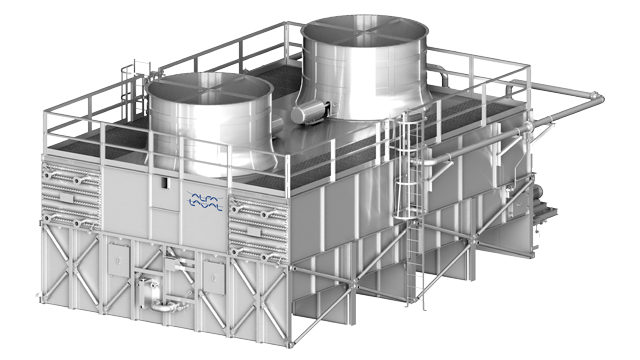
Optimisation de l’utilisation de l’eau, maximisation du refroidissement
Le système Alfa Laval HYAC est disponible en deux modèles différents : Single Zone (SZ) et Dual Zone (DZ).
Caractéristiques uniques
Refroidisseurs HYAC Zone Unique (SZ)
Le modèle Zone Unique est destiné aux installations où les fluctuations de température de l'air ambiant entraînent un refroidissement insuffisant dans les échangeurs de chaleur traditionnels refroidis par air.
Un Alfa Laval HYAC résout ce problème en basculant entre deux modes de fonctionnement : refroidissement sec et refroidissement humide, en fonction de la température ambiante. En n'activant le mode de refroidissement humide que lorsque cela est nécessaire, pendant les périodes les plus chaudes, la consommation d'eau et l'encombrement sont réduits au minimum, tout en garantissant des températures de sortie correctes.
Refroidisseurs HYAC Dual Zone (DZ)
Le modèle Dual Zone est utilisé dans les installations où une capacité de refroidissement accrue est nécessaire, par exemple lors de l'augmentation de la capacité de production. La première zone de refroidissement d'un HYAC DZ fonctionne comme un échangeur de chaleur traditionnel refroidi par air et la seconde zone comme un refroidisseur évaporatif.
Grâce à la seconde zone, la capacité de refroidissement par surface installée est nettement supérieure à celle d'un système traditionnel d'échangeurs de chaleur refroidis par air, tout en consommant beaucoup moins d'eau qu'une tour de refroidissement.
La conception à deux zones de refroidissement permet d'accepter des températures d'entrée plus élevées et réduit simultanément les panaches de vapeur dans la zone de refroidissement par évaporation.
Fonctionnement de l'HYAC Single Zone
Le système HYAC SZ d'Alfa Laval comporte une seule zone de refroidissement. Lorsque la température ambiante est basse, le système HYAC fonctionne comme un échangeur de chaleur traditionnel à refroidissement par air ; le fluide chaud circule à travers un faisceau de tubes à ailettes, et un ventilateur aspire l'air frais sur les surfaces des tubes pour refroidir le fluide à l'intérieur.
Lorsque la température ambiante dépasse un certain niveau, le mode de refroidissement humide est activé et de l'eau est pulvérisée sur les tubes. La chaleur du fluide chaud évapore l'eau sur les surfaces des tubes, ce qui augmente considérablement le refroidissement. Le refroidissement par voie humide n'étant activé qu'en cas de besoin, des quantités substantielles d'eau sont économisées par rapport à une solution de tour de refroidissement.
De plus, comparé à un échangeur de chaleur refroidi à l'air, un système HYAC est beaucoup plus petit et comporte moins de ventilateurs, ce qui permet d'économiser à la fois sur les coûts d'investissement et sur les coûts d'exploitation.
Fonctionnement du HYAC Dual Zone
Comme son nom l'indique, le système HYAC Dual Zone (DZ) comporte 2 zones de refroidissement.
La 1ère est un échangeur de chaleur traditionnel à refroidissement par air, et la 2nde est un refroidisseur par évaporation, très similaire à un WSAC Alfa Laval standard.
En fonctionnement normal, les 2 zones sont toujours activées. Le fluide chaud est d'abord refroidi dans la zone de refroidissement par air, approchant la température du bulbe sec, puis il est encore refroidi dans la seconde zone, atteignant une température finale proche de la température du bulbe humide.
Ce refroidissement en deux étapes permet d'obtenir une capacité de refroidissement beaucoup plus élevée et une température de sortie plus basse que pour les échangeurs de chaleur traditionnels refroidis par air. Il permet également d'économiser de l'eau par rapport aux systèmes de refroidissement par évaporation et aux tours de refroidissement standard. En outre, la conception à deux zones permet de réduire le panache visible. Grâce à sa grande efficacité de refroidissement, un système HYAC est beaucoup plus petit qu'une solution d'aéroréfrigération comparable, ce qui permet de réduire les coûts d'investissement et d'exploitation.
Les systèmes HYAC sont parfaits pour les extensions lorsqu'un refroidissement accru et une faible consommation d'eau sont nécessaires, et l'espace est limité.
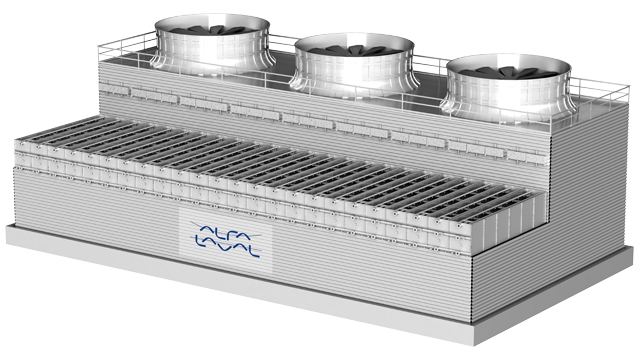
Trois configurations de HYAC
Les systèmes Alfa Laval HYAC sont disponibles en trois configurations différentes avec des plages de capacité variées. Les trois configurations peuvent être utilisées pour le refroidissement de fluides et de gaz, ainsi que pour la condensation.
Systèmes compacts
- Unités compactes, montées sur skid, pré-raccordées et pré-câblées
- Armoire de commande et section de traitement de l'eau disponibles
- Testés en usine
- Systèmes Plug-and-play prêts à l'emploi, installation rapide et facile
- Protection contre le gel disponible
- Puissance frigorifique typique par unité jusqu'à 10 MMBTU/h (2,9 MW)
Systèmes modulaires
- Systèmes de taille moyenne, idéaux pour les extensions
- Modules préfabriqués assemblés sur site
- Boîtiers en acier épais
- Testés en usine
- Protection contre le gel disponible
- Puissances thermiques typiques par unité de 10 MMBTU/h à plus de 30 MMBTU/h (2,9 - 8,8 MW)
Systèmes montés sur site
- Systèmes de grande taille avec un encombrement minimal
- Bassin en béton avec structure superposée en plastique renforcé de fibres (FRP) ou en béton
- Coût d'installation et coût total de possession les plus bas pour un refroidissement/une condensation à haute capacité
- Modules interchangeables
- Protection contre le gel disponible
- Charges de refroidissement importantes
Quel type de refroidisseur d'air hybride choisir ?
Single Zone, Dual Zone, ACE, WSAC, vous ne savez pas quel type de refroidisseur est le plus adapté à votre site ? Voici quelques repères pour choisir la bonne solution :

Choisissez un échangeur HYAC à zone unique si :
- Vous êtes confronté à des températures ambiantes très variables qui approchent ou dépassent la température de sortie souhaitée pour votre processus
- Vous constatez un refroidissement insuffisant de votre processus pendant les périodes chaudes
- souhaitez économiser de l'eau pendant les périodes où les températures ambiantes sont plus basses
- Refroidisseurs d'air hybrides HYAC
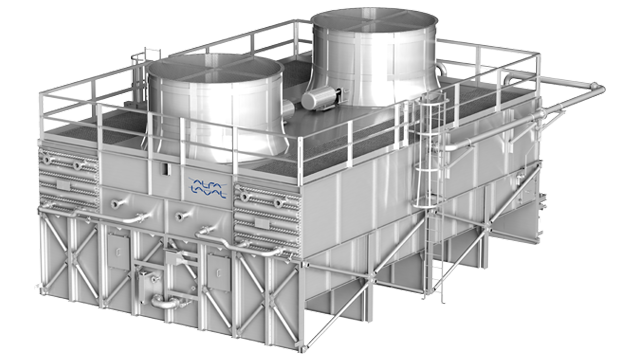
Choisissez un échangeur HYAC Dual Zone si :
- vous avez des températures ambiantes sèches assez élevées
- vous constatez un refroidissement insuffisant dans votre usine ou souhaitez bénéficier de températures de sortie encore plus basses
- vous souhaitez économiser de l'eau
- vous avez des températures d'entrée élevées et souhaitez réduire les panaches de fumées
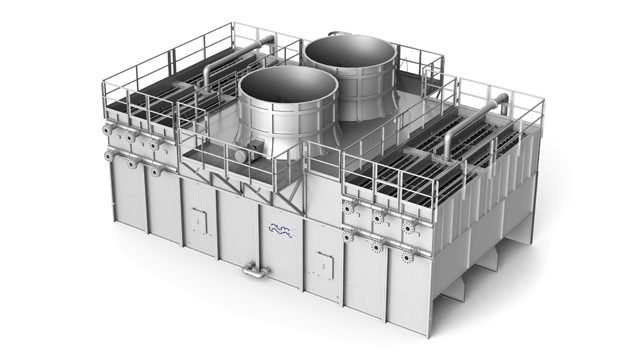
Choisissez un refroidisseur d'air à surface humide WSAC si :
- vous avez un bon accès à l'eau
- vous avez une capacité de refroidissement insuffisante dans votre usine
- vous avez des avantages pour le processus grâce à des températures de sortie plus basses, tels qu'une augmentation de la capacité de production ou une réduction des coûts d'exploitation
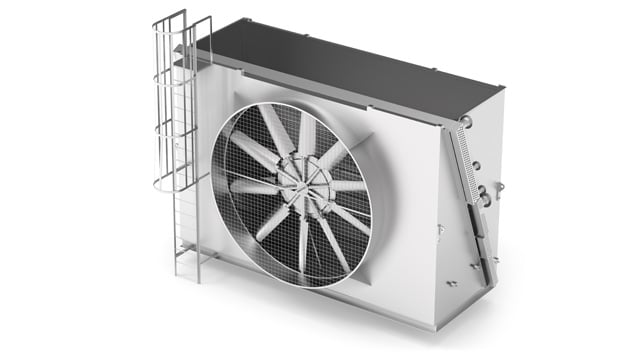
Choisissez un échangeur de chaleur refroidi par air ACE si :
- vous n'avez aucun accès à l'eau
Vous souhaitez approfondir vos réflexions en compagnie de nos experts ?
N'hésitez pas à nous contacter pour obtenir des réponses détaillées :
3 configurations
Les systèmes Alfa Laval HYAC sont disponibles en trois configurations différentes avec des portées de capacité différentes. Les trois configurations peuvent être utilisées pour le refroidissement des liquides et des gaz, ainsi que pour la condensation

Choisir la solution adéquate
Vous ne savez pas quel échangeur thermique au refroidissement par air vous convient le mieux ? Laissez-nous vous guider à travers les différentes options.
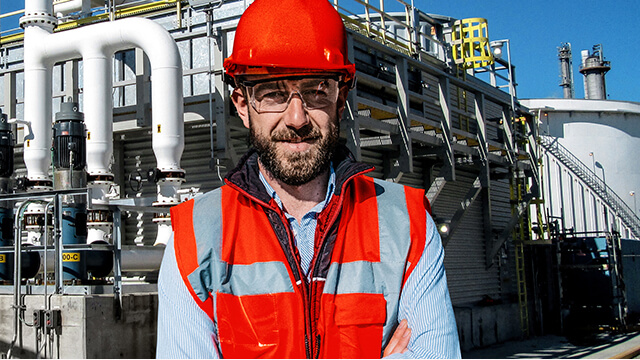
Services Alfa Laval pour les refroidisseurs d'air hybriges HYAC
Découvrez comment notre vaste gamme de services peut vous aider à accroître la fiabilité de votre exploitation, à réduire la consommation d’eau et d’énergie, à maximiser les performances et à maintenir des coûts de maintenance peu élevés. Nos ingénieurs de service sont prêts à vous assister tout au long du cycle de vie de votre équipement. Ils peuvent vous aider pour l’installation et la mise en service, la maintenance régulière, les audits de performance, le dépannage, les mises à niveau et la formation, pour ne citer que quelques exemples.
